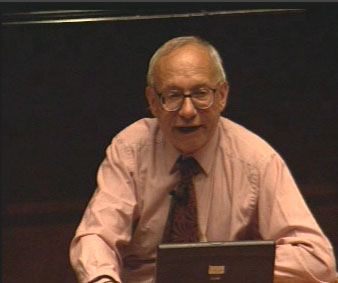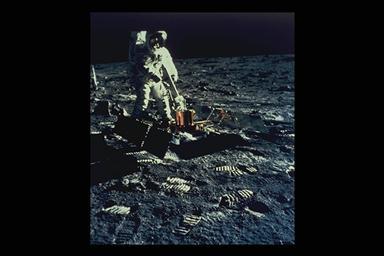
Video: MPEG-1 file (21MB)
The history
of the ARPANET and DARPA presented by Prof. Peter Kirstein (in English)

Apollo 11 landed on the moon in 1969
(NASA archives)
|
- 1961
- In July Leonard Kleinrock (MIT) publishes the first
paper on packet switching theory, which forms the basis
for the creation of the Internet. In August the Helsinki phone
company, HPY, tries out IBM 1001 data transfer equipment in
Finland.
- 1965
- Ted Nelson invents the term Hypertext to describe
links to other texts embedded in a text. He later designs a
long, worldwide hypertext network called Xanadu, but it is not
until 25 years later that Tim Berners-Lee makes hypertext
available to all network users with his World Wide Web project.
- 1964
- Data transmission begins in practice in Finland when
Kesko is licensed to use four modems with its Plessey PT750PT paper tape system. The Rand Corporation,
funded by the US Air Force, produces a report on
distributed Computer networks, which describes the
advantages of distribution compared with the centralised
mainframe systems typical of the day. One of the most important
features was the continued functioning of the system regardless
of whichever part of it might be destroyed in an enemy attack.
- 1967
- The United States Department of Defense Advanced Research
Projects Agency (DARPA) launches the ARPANET
project to design a distributed computer network.
- 1969
- April sees the release of the first RFC
(Request for Comments) document, which launches a series of
technical publications about the Internet.
- The ARPANET network is set
up, creating the basis for the Internet. At the same time in
Finland, Prof. Eino Tunkelo's proposal for a supercomputer is
set in motion. This would require data links to the
universities.
|
![]()
